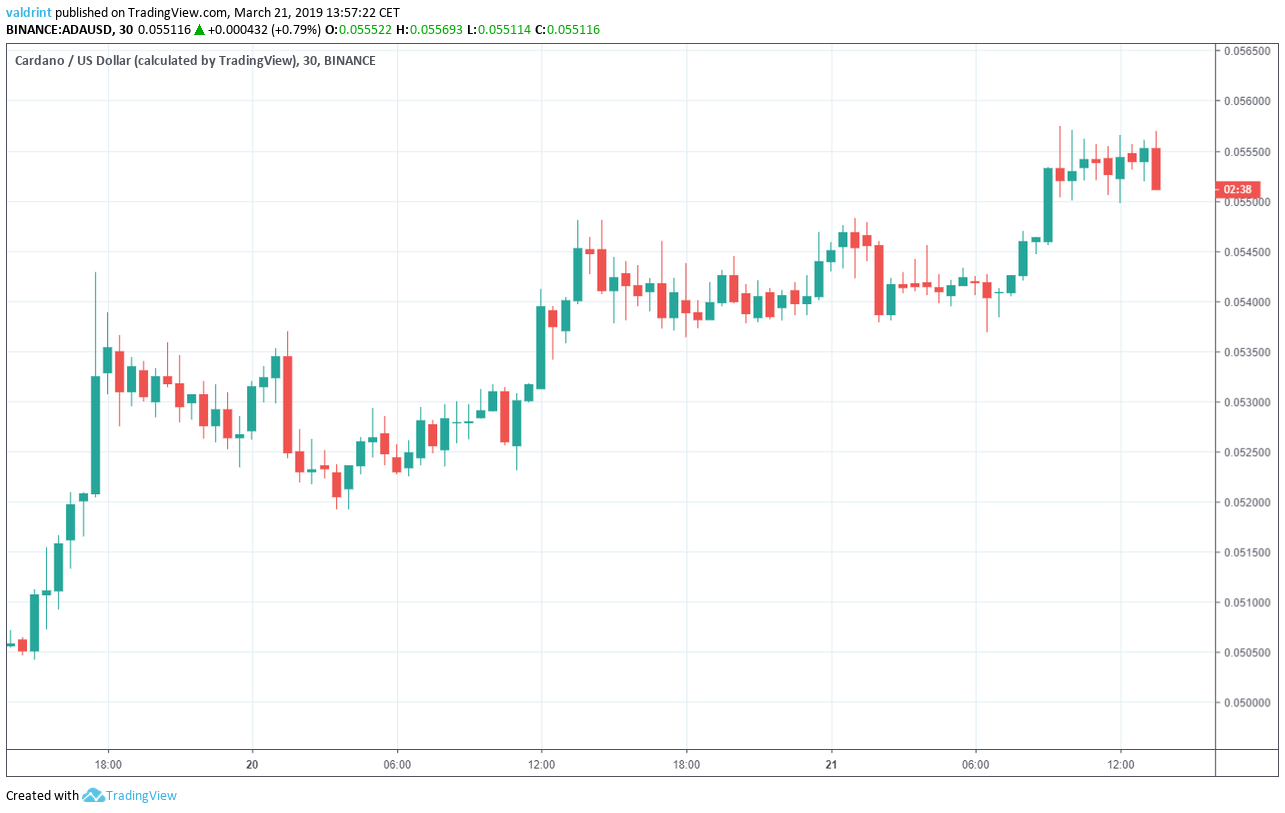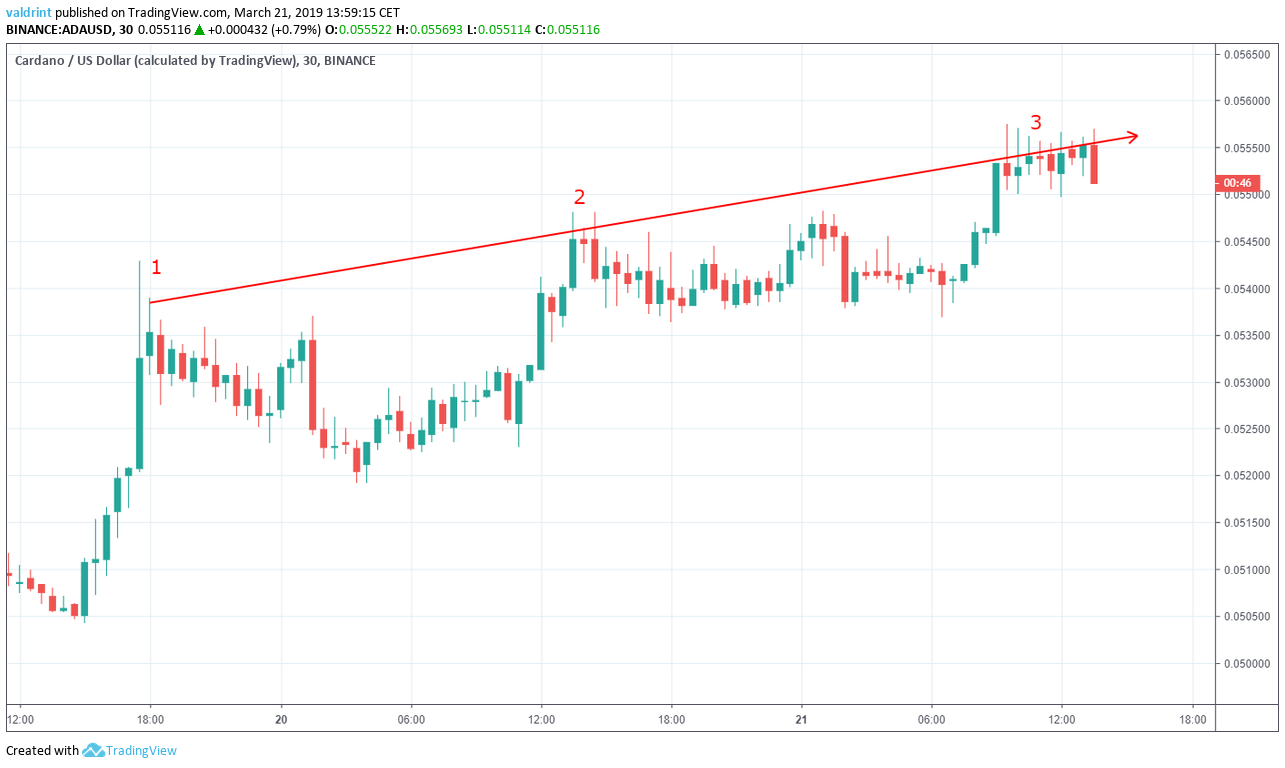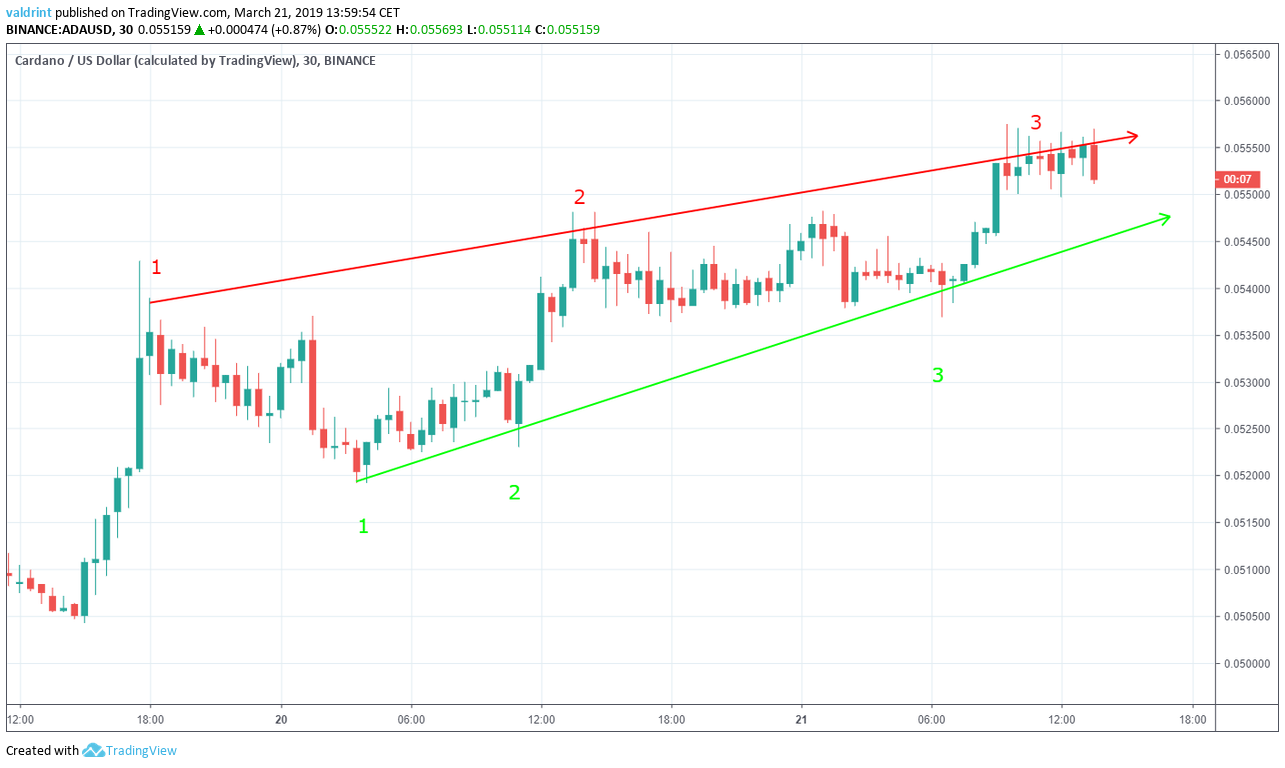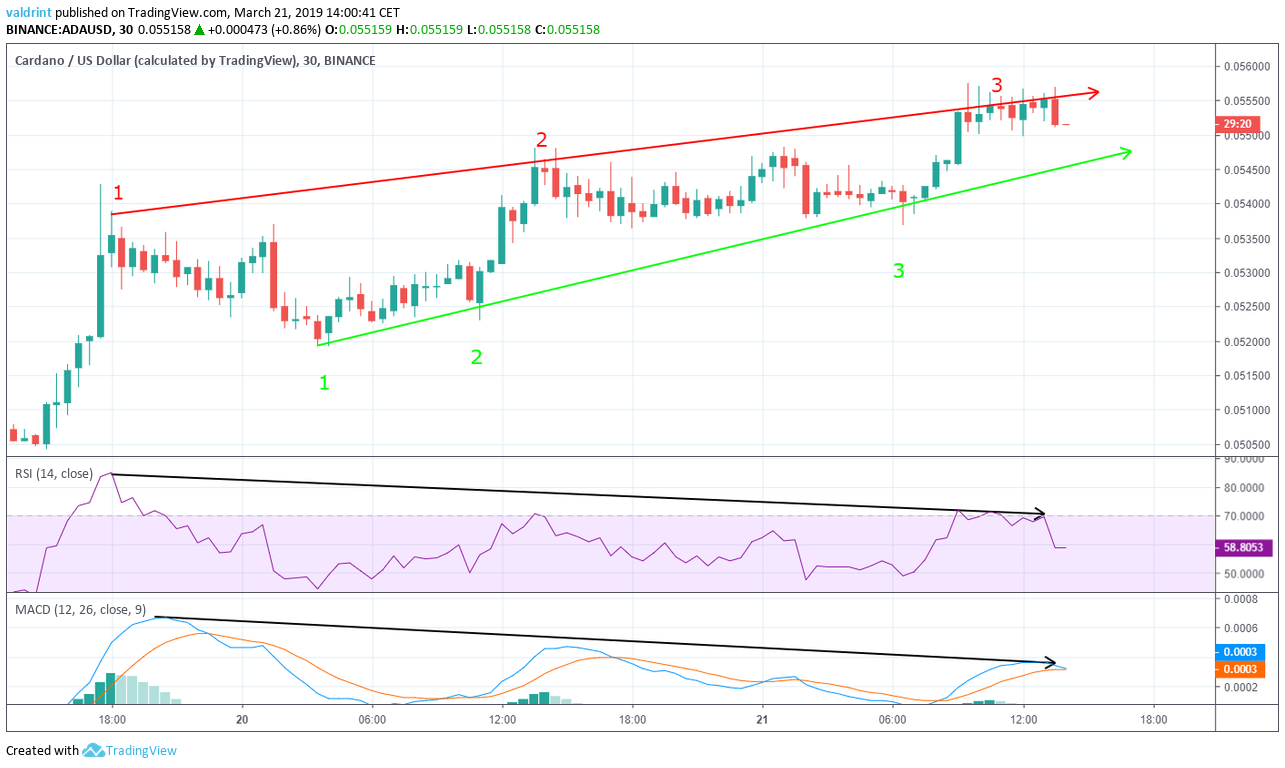On Mar 19, 2019, the price of Cardano (ADA/USD) made a low of less than $0.05. Subsequent increases led to highs over $0.055 at the time of writing.
Should we expect continued growth or is a reversal coming soon?

Prices of Cardano (ADA): Mar 19-21, 2019.
In our Mar 15 analysis of Cardano, we predicted that the price will decrease slowly. Our prediction was invalidated on Mar 17, when ADA made a decisive upward move.
Based on our current analysis, price decreases are likely in the future for ADA. There is also the possibility of a breakdown below support which could initiate rapid price drops.
Cardano (ADA): Trends and Highlights for March 21
- Cardano has been on an uptrend since Mar 19.
- ADA is trading inside an ascending wedge.
- There is bearish divergence developing in the RSI and the MACD.
- There are support areas near $0.054, $0.0525 and $0.0505
- There is resistance areas near $0.055.
Ascending Resistance
The price of ADA on Binance is analyzed at 30-minute intervals from Mar 19 to Mar 21.
On Mar 19, the price made a high of $0.054. A gradual decrease ensued, which was followed by an upward move. The price has been making higher highs since. Tracing these highs gives us an ascending resistance line.
The resistance line acts as a ceiling to price, preventing further upward movement and measuring the rate of increase. It theoretically traces the upper limits of the price.
Movements above the line—such as the $0.54 and $0.557 wick breakouts on Mar 20 and Mar 21, respectively, can be considered insignificant since they were not supported by continuous increases.
Based on our analysis, it appears that the price of ADA has been increasing at the same rate as predicted by the resistance line.
It is likely that the price will experience gradual increases following the resistance line until a decisive downward or upward movement is initiated. However, the resistance line alone is not sufficient in determining how long the increases will last or when the decisive movement will occur.
Ascending Wedge
The price reached a low of $0.0519 on Mar 20. A gradual upward move ensued. Price has been making higher lows since. Tracing these lows gives us an ascending support line.
Similar to the resistance line, the support line prevents further downward movement. It also traces the lower limits of the price and gauges price trends.
The resistance and support lines combine to create an ascending wedge. This wedge is a bearish pattern. It suggests price decreases are likely forthcoming.
The wedge is a better predictor of price fluctuations than the support or resistance lines alone.
The price is likely to trade inside the confines of the wedge until a point of convergence occurs, at which time a breakdown should occur.
Possible Top
Combining moving average convergence divergence (MACD) and RSI bullish/bearish divergence with support/resistance essentially predicts price fluctuations.
The MACD is a trend indicator that shows the relationship between two moving averages (long and short-term) and the price. It is used to measure the strength of a move. The RSI is an indicator which calculates the size of the changes in price in order to determine oversold or overbought conditions in the market.
On Mar 19, the price made a high of $0.54. It has continued to create higher highs since.
During the same interval, the MACD and RSI acted differently. While they made the first high at around the same time as the price, they have proceeded to generate lower values since.
This is known as bearish divergence and often precedes drops in price.
It is especially effective if bearish divergence occurs in a bearish pattern and vice versa. This is the case with ADA .
Using these indicators and patterns, it is likely that the price has created a short-term high and will drop to the support line before eventually breaking down.
Future Movements
Resistance and support areas are formed when the price reaches a certain level several times. They can act as respective ceilings or floors—preventing the price from moving further in that direction.
The first resistance area is found near $0.055, coinciding with the top of the wedge. According to our analysis, it is unlikely that the price will reach this area in the near future.
The closest support area is found near $0.054 followed by support areas near $0.0525 and $0.0505. If the price were to break down from the wedge, these would provide likely reversal areas. Based on our analysis, it is likely that the price reaches at least one of these areas.
Summary Of Analysis
Based on our analysis, price decreases for ADA are likely to occur in the future. If the price breaks down from the wedge, this prediction will be partially validated. If it reaches the second support area, it will be fully validated. A breakout above the wedge would invalidate the prediction.
Do you think the price of ADA will break out or break down? Let us know in the comments below.
Disclaimer: This article is not trading advice and should not be construed as such. Always consult a trained financial professional before investing in cryptocurrencies, as the market is particularly volatile.




